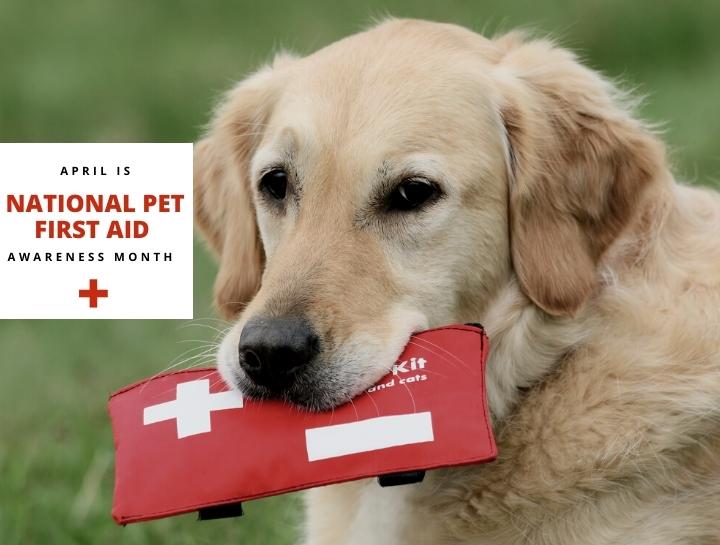National Pet First Aid Awareness Month

April is National Pet First Aid Awareness Month and, as responsible pet owners, it’s important to be prepared with basic first aid supplies in the event of an emergency. As with any severe injury or illness, contact your veterinarian immediately for instructions.
Always use caution when providing first aid to an injured pet as some may react negatively due to pain and stress. Many of these products should only be used as a temporary solution until your pet can be seen by a veterinarian.
Here are a few items that can be assembled at home to create a pet first aid kit.
- Emergency Contacts - place a card with emergency contact information in your first aid kit. This should include phone numbers for your veterinarian, an emergency clinic, and poison control. Keep a copy in your wallet and provide pet sitters with a copy as well.
- Latex or Rubber Gloves - Keep several pairs in your first aid kit. Gloves will protect both you and your pet and reduce the risk of infection when dressing a wound.
- Bandages - bandages should only be a placeholder until your pet can be seen by a veterinarian. Opt for self-adhesive pet bandages that won’t stick to fur but will provide the needed pressure to reduce bleeding. Never leave a bandage on an unattended pet as they may try to remove it with their teeth and swallow the material/dressing. If it is too tight or applied incorrectly, it could cause more issues if the bandage is left on.
- Antiseptic Wipes - Pet antiseptic wipes will clean your pet’s wounds and help reduce the risk of infection. Use caution with any antiseptic agent around the eyes.
- Blunt-tipped Scissors - Blunt-tipped scissors will be useful when cutting bandages or trimming hair near a wound.
- Plastic Syringe - A plastic syringe will come in handy if you need to give fluids to a dehydrated pet or to flush out a wound.
- Tweezers - Tweezers can be used to remove a sharp object, such as a thorn, that may be difficult to remove with just your fingers.
- Tick Remover - Tweezers should NOT be used to remove ticks. Instead, ask your veterinarian what tick remover kit they recommend and add it to your First Aid Kit.
- Medications - Keep a stash of your pet’s prescription medications in your kit for emergencies. Keep an eye on expiration dates and replenish as needed. Styptic powder can also be kept on hand to help reduce pain and bleeding, especially with broken nails. Hydrogen peroxide is another first aid kit staple, however, it should not be used to induce vomiting without guidance from your veterinarian or poison control. Never administer any over-the-counter medications to a pet without speaking to a veterinarian first.
- Bottled Water - Bottled water can be used to flush wounds or in the event of heat exhaustion.
- Towels - Including towels in your pet first aid will provide a soft place for your pet to lay down, can be used for clean up, and even for a makeshift dog harness for lameness.
Remember, while being prepared with your first aid supplies can help save your pet, always contact your veterinarian to ensure they get the treatment they need in an emergency situation.
